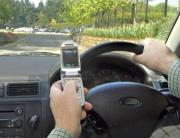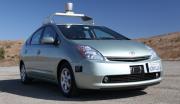The Maidenhead Advertiser reports that Keisha Bianca Wall crushed a 63 year old woman against a wall shortly after receiving a text message last February. She denies causing death by dangerous driving. The BBC also has the same story.
 Wall, who was 18 at the time, was driving a black Suzuki Jimny she’d been given as a Christmas present. She had passed her test eight months earlier. Her mother – a driving instructor – was in the car with her. The trial is ongoing.
Wall, who was 18 at the time, was driving a black Suzuki Jimny she’d been given as a Christmas present. She had passed her test eight months earlier. Her mother – a driving instructor – was in the car with her. The trial is ongoing.
Over in the States (and Canada) at the moment, the issue of texting whilst driving is big news.
NY1 reports on the current campaign to fight what they call “distracted driving”. The report says that 30% of under-30s admit to texting whilst driving, and over 60% admit to using the phone. In 2009, around 5,500 people were killed as a result of distracted driving in America. There is a government website – distraction.gov – which is worth a look.
The same story is covered by 13 News in Florida, and refers to a 17 year old who was killed on her way to school in 2009 – she was texting behind the wheel.
The California Highway Patrol is also actively trying to deal with the problem in a more aggressive way.
KRMG in Oklahoma reports on a bill that hopes to make texting behind the wheel illegal. The Toronto Star reports that “Webbing while driving” is a growing problem. And CBS reports on beauty queen, Miss South Dakota, who is taking on distracted driving.
Back in the UK, Essex police are taking on the problem in a blitz on mobile-using drivers. Of course, the problem they have over here is the Law.
Going back to the original story, it doesn’t matter if Keisha Wall was looking at her phone or not. If it can’t be proved, she’ll be let off.
EDIT 10/3/2011: The American side of this topic is being picked up by numerous Stateside (and North America generally) news sources:
- CTV News (British Columbia) – apps to stop texting
- philly.com
- The Maneater – from Missouri
- The Baltimore Sun
- KY3.com
- autoevolution
- Reuters (Canada)
- Montreal Gazette
- e-wisdom (Maryland)
Inside Line(New York)- CBS News
- Bloomsberg
- KXO Radio (California)
My newsfeeder is going crazy – there are so many stories coming out of America on this now that there are too many to list.
 I’m sorry, but this is sci-fi nonsense. No one in their right mind is going to go for this as a means of personal transport.
I’m sorry, but this is sci-fi nonsense. No one in their right mind is going to go for this as a means of personal transport. I have my own views on these. They were originally intended to warn other drivers that there was a child in the car. In itself, that has value from a safety perspective.
I have my own views on these. They were originally intended to warn other drivers that there was a child in the car. In itself, that has value from a safety perspective.